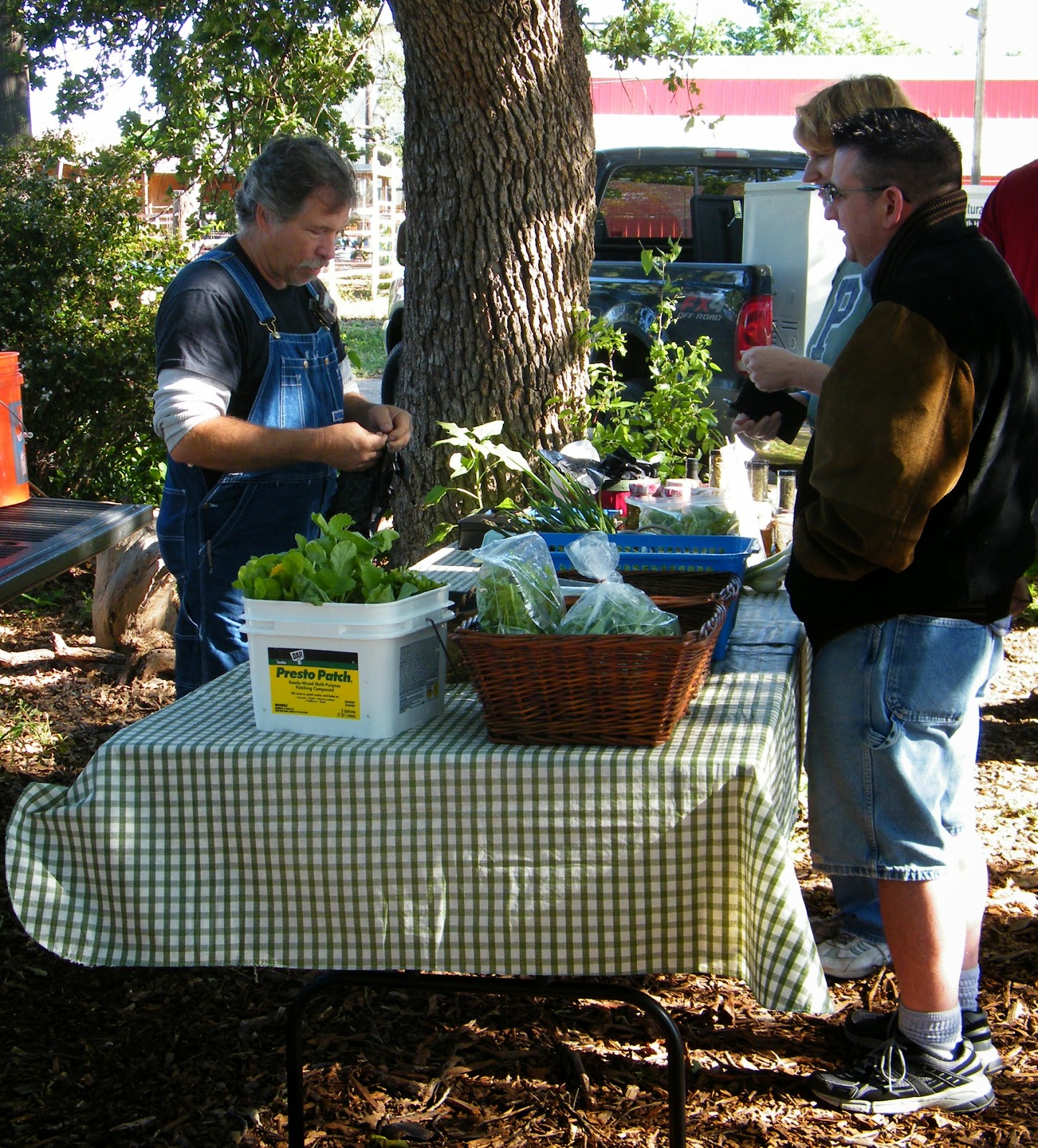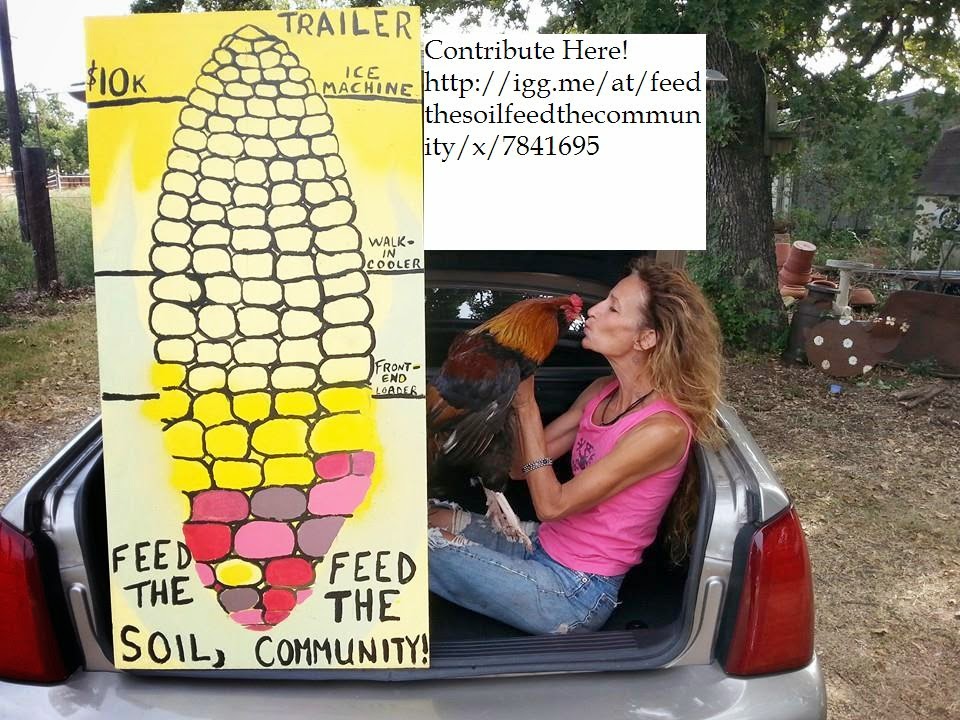Before I started farming, I used to write a weekly column about home gardening sprinkled with some tips about healthy eating. With more and more of you looking to grow home gardens and eat locally, I thought I'd revive some of those tips. Plus, I can now add new information that I've gleaned from colleagues or learned as I've been growing food full time for the past 7 years. Granted, I grow on a much larger scale than most of you will likely want to tackle. But many of the tips and some of the techniques, can be replicated in any size garden.
And with all of the talk these days about the importance of eating organic, fresh foods, well, it doesn’t get any more fresh than picked from your own back yard where you know for a fact what you used, and what you didn't use, in the garden. So if you want to eat healthy, fresh and organically this year, you should know that it doesn’t
have to be expensive or cumbersome.
Awhile back I shared
a link to a blog by a mother who planned out how to budget for her family on
a food stamp allowance and still eat an organic, healthy diet all week
long. Here is that link again. http://www.rebeccablood.net/thriftyo/2007/04/the_organic_thrifty_food_plan_1.html I think a lot of it is still relevant. It all comes down
to a little bit of planning and a little tweaking of our attitude regarding the way we think about eating and lifestyle priorities.
I have had many conversations with folks about how hard they
think it is to eat a healthy, home-cooked diet rich in vitamins and fresh
foods. I’ve been told I’m nuts or unrealistic. Well, I'm not perfect at it either, but I know it can be done. I keep reading about people who have done, or are doing it.
Plus, I hear all of the
time people say that they are just too busy to cook. Too busy to shop. Well, you know
what? I'm busy, too. I have 14 acres and lots
of animals to take care of every day. Honestly, I don't always feel
like
cooking when I come in after a 12-14 hour day in the field - any more than a
single parent does after pulling a double shift and dragging kids to
several different soccer fields or home from day care centers.
So, in order for all of us to do
this better, we need to plan. I'll invite folks that I know to share
cooking tips, including pre-making dishes for later in the week, and
using leftovers so there's less waste, too. These can help keep the
output of both money and time spent, more efficient.
I think part of the problem, too, is some folks today
have lost touch with their roots when it comes to eating healthy diets of
real food. And believing too much of the marketing they see in ads. Trust me, just because it's sold on the supermarket shelf, of any grocery store, doesn't mean it's all that great for you.
 Most of us who grew up in the 60’s and 70’s, ate much
healthier, real foods when we were younger than many of today's kids do. And, I daresay, almost all of our grandparents
ate mostly meals made from scratch, because most of the aisles filled with ready made meals found in today’s stores,
didn’t exist 50 years ago. Come to think of it, as a kid, I could make it through
our neighborhood grocery store in about 10 minutes walking up and down every single
aisle. All 8 of them!
Most of us who grew up in the 60’s and 70’s, ate much
healthier, real foods when we were younger than many of today's kids do. And, I daresay, almost all of our grandparents
ate mostly meals made from scratch, because most of the aisles filled with ready made meals found in today’s stores,
didn’t exist 50 years ago. Come to think of it, as a kid, I could make it through
our neighborhood grocery store in about 10 minutes walking up and down every single
aisle. All 8 of them!
So what did they eat in the “old days”? Simple – they ate real food. And most, in
the summer anyway, they grew a lot of it themselves. I remember my mom growing in our tiny little postage stamp, mostly concrete back yard. Corn, tomatoes, cucumbers, beans, peas, and who knows what else she grew back there.She planted a garden every summer in my mid-west home town next door to Chicago.
It seems we have gotten used to popping “pseudo
foods” into a microwave or driving through the fast food lane, or skipping meals altogether, because we keep our (or our kids'), schedules so full we don't have time to prepare and eat food at home the way it used to be done.
Eating is not simply about stopping your
stomach from growling or quenching a craving for fat or salt. It is meant to fuel your organs with vital nutrients so they can have a better chance at working properly. It's to really satisfy
your hunger so you don’t over-eat. And, it can help restore any potential damage done, (you know, from
when you had that streak of eating an entire box of sticky buns for breakfast and some kind of mystery food in a box for dinner), so you don’t become sickly. What’s the saying about food
being our medicine? Or an ounce of prevention…. You get the idea.
One great cost-cutting way to get your daily dose of
healthy, real food, is still by growing some of it like people used to do – right outside your back door - or front door, or both! Even if you just start with container gardens for lack of space, there are many things you can grow at home that are pretty easy.
 What if we all learned to grow some of our own food like our
parents and grandparents used to do, and passed that skill on to someone else?
What if we all learned to grow some of our own food like our
parents and grandparents used to do, and passed that skill on to someone else?
Once the initial prep work is done on a new garden plot, there’s just a little bit of
upkeep a few times a week, and you’ll be on your way to fresh salads, fresh steamed
or raw veggies and other delicious foods. As a side benefit, you’ll get some good exercise and fresh
air, too. It’s also a great hobby for kids to do with you, so they can see what vegetables look like as they're growing, and learn where
they really come from – before they
show up in cellophane wrapped containers in the store. And hey, if you don't have any around, see about including a neighbor's kids. You can usually rent a kid pretty cheap for an hour or two.
 Teach them that yes, we actually plant and dig French fries, out
of the ground first. No, those nubby little packaged school lunch carrots don’t grow on trees - or usually that small. Peas can actually be eaten raw,
they’re not hard to start with - those are frozen. I often hear many parents say they have never
seen their kids eat so many vegetables before they started to help grow a
family plot. Kids can be a lot of fun in the garden. Plus, they don't usually mind picking bugs off of plants and that's one of the ways we control pests. I keep a few containers around for our CSA members' kids to catch grasshoppers and caterpillars to feed to the chickens. Most of them love it!
Teach them that yes, we actually plant and dig French fries, out
of the ground first. No, those nubby little packaged school lunch carrots don’t grow on trees - or usually that small. Peas can actually be eaten raw,
they’re not hard to start with - those are frozen. I often hear many parents say they have never
seen their kids eat so many vegetables before they started to help grow a
family plot. Kids can be a lot of fun in the garden. Plus, they don't usually mind picking bugs off of plants and that's one of the ways we control pests. I keep a few containers around for our CSA members' kids to catch grasshoppers and caterpillars to feed to the chickens. Most of them love it!
So, let’s get started this year! Next
time I’ll visit with you about how to select a site for your garden, what you
can do right now to start preparing the soil – and guess what, it doesn’t
involve digging – and the fun part; seed and plant shopping!
Until then, start thinking about 4 or 5 things you really like to eat and could possibly grow yourself! And....
Marie






























